| Extremely efficient automatic design technique has been developed specifically for the designing of WDM filters. The WDM option is based on the unique know-how that is inaccessible to other thin film programs.
In order to design a WDM filter, its target specifications must be specified:
For more detail see WDM Filters in Design Collection article. WDM design option is available through Synthesis –> Filter design… |
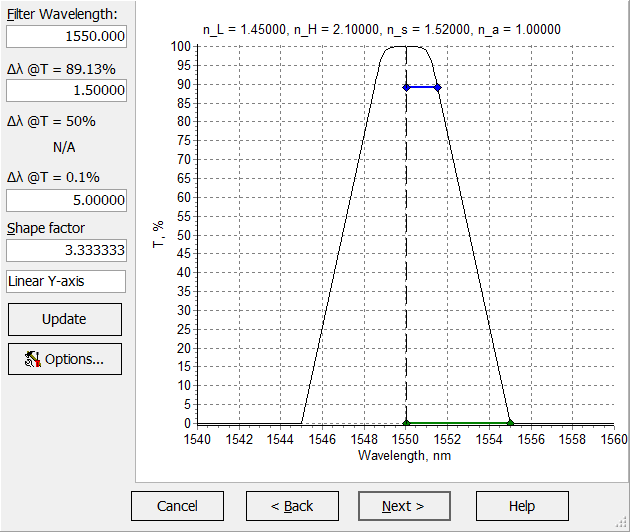 |
| Special comprehensive mathematical procedure optimizes the filter design with respect to the entered specifications. The procedure is based on the global integer search (see the details in our publications). | |
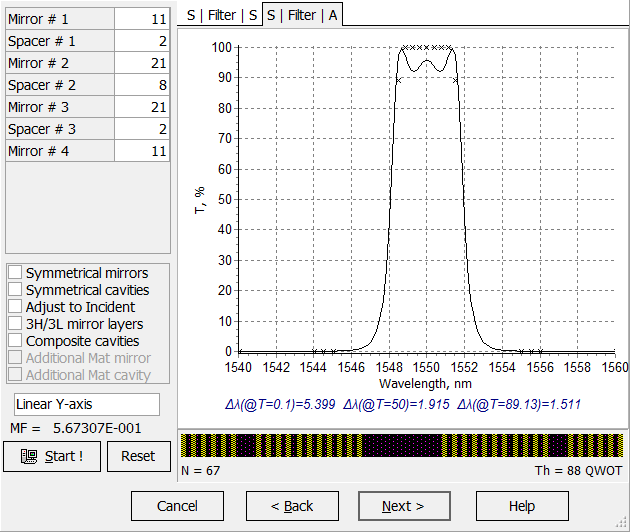
|
OptiLayer allows additional design settings:
|
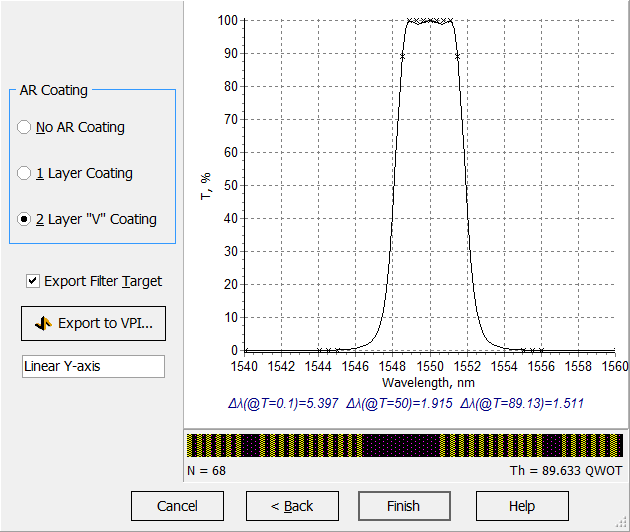 |
OptiLayer allows adjusting the performance of the filter design with respect to the actual refractive index of the incident medium if the filter was designed for the embedded case. It is possible to use 1-layer AR coating or 2-layer AR coating of the “V” type.
The first layer of the “V” coating is often of the same material as the last layer of the filter. In this case such layers form a single layer and the resulting number of design layers is increased only by 1. If Export Filter Target is marked, WDM Filter Design option will also export WDM filter target to the OptiLayer environment. Export to VPI… allows you to export WDM filter spectral characteristics to VPIphotonics software. Visit www.vpiphotonics.com for more information on VPIphotonics. |
| Using configuration window, you can customize conventions used in the WDM Filter synthesis dialog and the WDM Error Analysis command of OptiLayer.
You can specify the Transmission level and Rejection level for setting the transmission and rejection bands of a WDM filter. Both values can be entered in absolute values and in dB. Entry fields for these values are synchronized. Also it is possible to specify whether it is necessary to use a 50% half-width requirement (half-width at the transmission level of 50%). For more detail see WDM Filters in Design Collection article. |
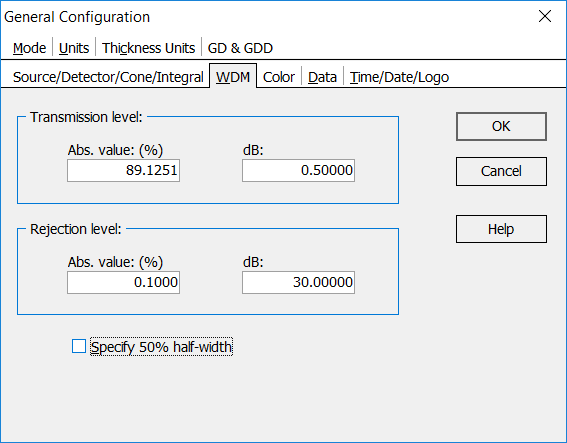 |
| WDM filer before and after adjustment to the incident medium. | |
| (NEW!) Starting from Version 12.12 (2017), it is possible to design WDM filters for oblique incidence (arbitrary angle of incidence) and arbitrary polarization (s, p, A).
The corresponding setting can be found at the first page of the WDM dialog: Synthesis –> WDM Filter |
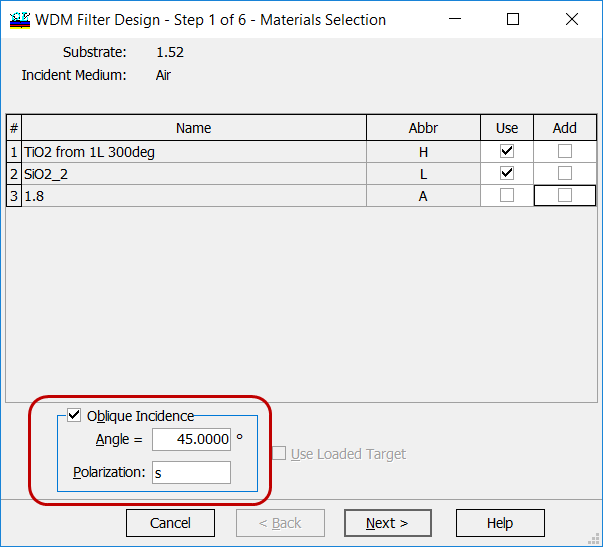 |
Learn more in our publications:
|
|
| _____________________________________________________________________________________________________________________________ | |
WDM filter option can be used also to design conventional narrow band pass filters with quarter wave and half-wave layer thicknesses.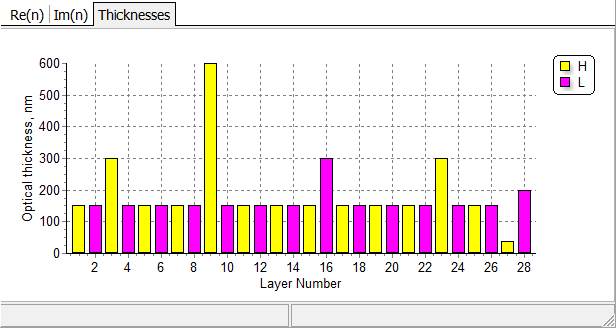
Narrow band pass filter consisting of quarter wave, half-wave and full wave layers. For more detail see WDM Filters in Design Collection article. |
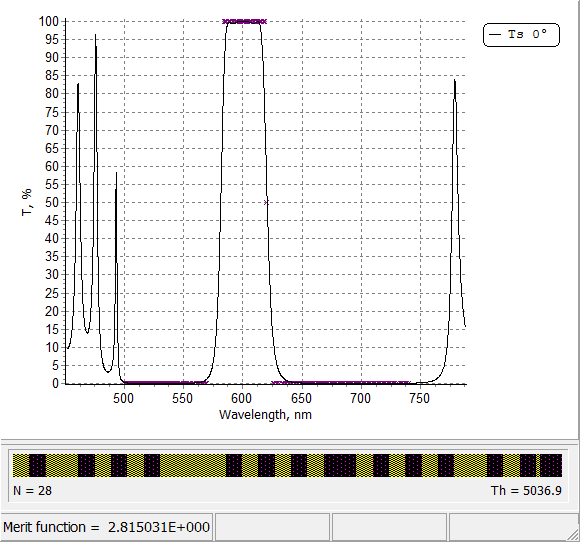 |
Look our video examples at YouTube
OptiLayer videos are available here:
Overview of Design/Analysis options of OptiLayer and overview of Characterization/Reverse Engineering options.
The videos were presented at the joint Agilent/OptiLayer webinar.